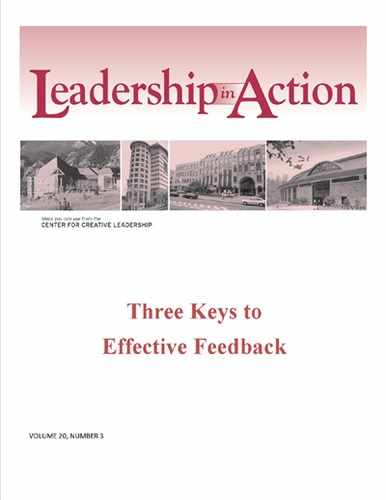Describe the Behavior
Describing behavior is the second step to giving effective feedback. It's also the most crucial step and the one that is most often omitted—probably because behavior can be difficult to identify and describe. The most common mistake in giving feedback is communicating judgments by using adjectives that describe the person but not the person's actions. That kind of feedback is ineffective because it doesn't give the receiver information about what behavior to stop or to continue in order to improve performance. Consider these statements:
He was rude during the meeting.
She seemed bored at her team's presentation.
He seemed pleased with the report his employees presented.
These statements describe an observer's impression or interpretation of a behavior. Now consider the following actions an observer might witness that could lead to those impressions and interpretations.
He spoke at the same time another person was speaking. (Rude)
She yawned, rolled her eyes, and looked out the window. (Bored)
He smiled and nodded his head. (Pleased)
The statements in this list describe the actions that led to the impressions and interpretations in the first set of statements. The focus is on the actual behavior, not on what the behavior might mean. By using the details of observed action to describe behavior, you avoid the mistake of judging behavior. By focusing on the action, not the impression, you can communicate clear facts that a person can understand and act on.
To become more adept at identifying behavior and effectively communicating what you have seen to the feedback recipient, you need to capture not only what people do but how they do it. The new CEO who stands before her company and says, “I'm excited to be your new president,” will appear insincere if she has no expression on her face, speaks in a flat voice, and uses no hand gestures. When giving people feedback using SBI, it is important to capture not only what is said or done but also how it is said and done. You can capture the how by paying attention to three things: body language, tone of voice and speaking manner, and word choice.
Body Language
Body language is nonverbal communication and can include facial expressions, eye movement, body posture, and hand gestures. For example:
Jim was becoming increasingly irritated with Alice during their meeting. Alice frequently shook her foot, shifted in her seat numerous times, tapped her pen on the table repeatedly, and nodded her head at people as they passed by her cubicle while he was talking.
Although Alice never spoke, she sent loud and clear messages through her body language. Jim can begin to give Alice effective feedback by saying something like this:
“Alice, during our meeting yesterday in your cubicle I noticed that you looked at your watch several times during a fifteen-minute period. You tapped your pencil loudly on the table and shifted from side to side in your seat. You also nodded your head at people as they passed by your cubicle while I was speaking.”
Jim has communicated the situation and some clear instances of behavior to Alice. His approach will help Alice understand the impact of her behavior.
Tone of Voice and Speaking Manner
Tone of voice and speaking manner relate to the pitch of a person's voice, the speed and volume at which the person speaks, and the pauses used. Voice mannerisms can be hard to notice and describe for the purpose of giving effective feedback, but can be useful behavioral cues. For example:
Jason is introducing a new product idea to a group of his peers. During his presentation he pauses on at least six different occasions, halting in midsentence. After these pauses his voice slows down considerably. He speaks in a low monotone. When people ask him questions, he suddenly speaks very fast. He ends his talk by saying, “Thank you, thank you very much,” in a tone that is louder than he has used throughout the whole speech.
Jason probably created the impression that he was uncertain, nervous, and hesitant. But to say just that to him won't help him develop. Effective feedback can include a description of Jason's speaking manner. It can talk about how he presented the material—the pauses and the tone and volume of his voice:
“Jason, during your presentation yesterday you stopped several times and spoke so low that it was difficult for me to hear you. Then toward the end of your presentation, when people asked questions, you spoke faster and your voice got louder. The way you presented made me feel that you weren't well prepared or that you didn't care much about your presentation, and the way you spoke faster at the end made me feel that you were in a rush to get out of the room.”
Word Choice
A person's choice of words often can be the least important component of behavior. Nevertheless, capturing the specific language a person uses during a specific situation can help you give effective feedback.
During a face-to-face team meeting with a small development group, Bob loses his temper when he learns that Fred will miss a deadline. Bob calls Fred a loser in front of the entire group. When the meeting breaks up, the team members quietly file out without speaking to one another.
If the content of a person's message has an impact on you and you want to give effective feedback, write down the speaker's words so you can remember exactly what was said:
“Bob, during the team meeting this morning you called Fred a loser' in front of the whole group. I was really uncomfortable that you singled out one person and used that kind of insult. After hearing that, I felt that we weren't a team at all.”
